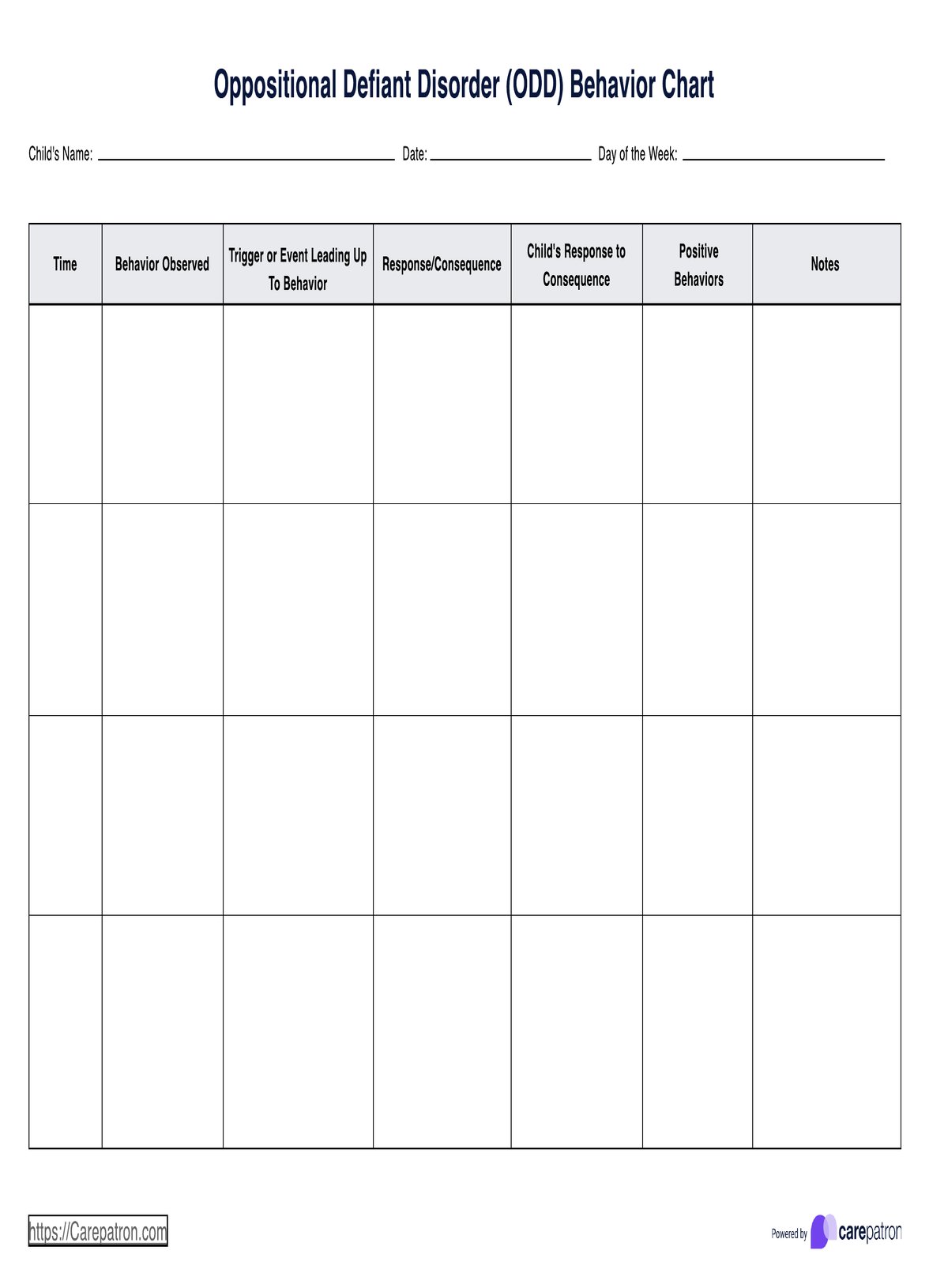Parents, therapists, educators, and caregivers of children with ODD symptoms typically use them.

Odd Behavior Charts
Dive into our comprehensive guide on the Odd Behavior Chart. Learn its significance and usage, and access a free downloadable example to streamline behavioral tracking.
Use Template
Odd Behavior Charts Template
Commonly asked questions
They document and track behaviors, identify triggers, evaluate intervention efficacy, and highlight positive behaviors.
The chart aids in understanding a child's behavioral patterns, optimizing interventions, facilitating better communication among caregivers, and promoting positive reinforcement.
EHR and practice management software
Get started for free
*No credit card required
Free
$0/usd
Unlimited clients
Telehealth
1GB of storage
Client portal text
Automated billing and online payments











